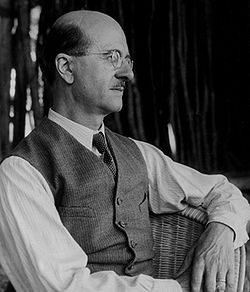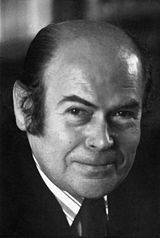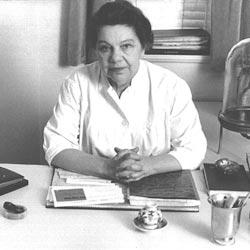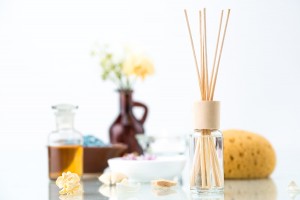Aromatherapy Past & Present January 6, 2017
Available evidence suggests that humankind recognised the power of aromatics as early as the Neolithic Period, which ended some 4,000 years ago. Aromatic herbs may have been used in cooking and medicine, as indicated by the discovery of medicinal plant deposits found in graves dating from some eight thousand years ago. Egyptian culture used resins, balms and fragrant oils for medical, magical and religious ceremonies, for embalming, and as an offering to their gods. Other ancient cultures recognised the physical and psychological benefits of scented ointments and oils, including China and India, during the same period as ancient Egypt. Greek and Roman cultures refined and added to this knowledge. Hippocrates, known as the father of modern medicine, maintained 2,500 years ago that “the key to good health rests on having a daily aromatic bath and scented massage’. Dioscorides wrote about aromatics in his Materia Medica about 100 AD.
With the fall of the Roman Empire and the expansion of Christianity, Roman physicians fled to Constantinople with the books of Galen, Dioscorides and Hippocrates. These were translated into Persian and Arabic and passed into the Arab world.
Most aromatic oils used (prior to about 1600 AD) were not distilled, as we know today, but were produced by macerating plants in hot vegetable oils or more commonly in animal fats. However, distillation of some sort is an age-old process, which may have begun as early as 2000 BC. This suggests that the Arabs revived or improved upon the process that had been known but perhaps little used for over four thousand years.
Between the 7th and the 13th centuries Alchemist Arabic philosophers devoted themselves to the old hermetic art of alchemy, the purification and concentration of spiritual forces. Reviving the use of aromatics in medicine and perfumery, they perfected the techniques. Alchemists optimistically searching for the “elixir of life” and “the philosophers’ stone” made many chemical discoveries.
800-870 AD Al-Kindi is known to have written a volume called The Book on Chemistry of Perfumes and Distillation.
Avicenna, the Great Physician, lived between 980-1037 AD and has been credited with the discovery of the refrigerated coil (a breakthrough in the art of distillation) and wrote the Canon of Medicine, a standard text until the mid-sixteenth century.
16th Century By the 16th century the printing press made possible the spread of aromatic and herbal knowledge, resulting in many herbal books; and “waters” and “chymical oils” could be bought from the local Apothecaries’ shops. A German physician, Hieronymus Braunschweig, wrote several books on essential oil distillation. In 1597 he referenced 25 essential oils included rosemary, lavender, clove, cinnamon, myrrh and nutmeg.
17th ‑ 18th Centuries By the beginning of the seventeenth century, with the isolation of Artemisia, bergamot, cajeput, chervil, cypress, mustard, orange-flower, pine, savin, thuja and valerian along with others, most of the useful essentials of Europe and the Near East had been discovered. The 17‑18th centuries saw the beginnings of the common use of essential oils and aromatics for health. During the great plague of Toulouse (1628-1631), a formula was revealed by four thieves caught red-handed, thus began the story of the origin of the “Four Thieves Vinegar” which used herbs and spices in vinegar. The next few centuries saw the medicinal properties and applications of essential oils analysed and recorded. These included such oils as cedar, cinnamon, frankincense, juniper, rose, rosemary, lavender, sage, Artemisia, cajeput, chervil, orange flower, valerian and pine.
19th Century With the arrival of technical chemistry and modern science in the 1800s the scientific revolution of the early 19th century began and aromatics were investigated more scientifically; and attempts were made to control the adulteration of essential oils from the eighteenth century onwards. This science revolution had two important effects on the study of essential oils. By 1887 we saw the first recorded laboratory tests on the anti-bacterial properties of essential oils thus spurring natural practitioners and herbalists to continue to use essential oils widely in herbal preparations. But the mainstream medical profession became firmly fixed on isolating the active principles of natural substances and producing chemicals as drugs, which remains today.
As research on essential oils continued, Drs. Gatti and Cajola, (Italy, 1923) published “The Action of Essences on the Nervous System“, explaining how odours influence mood and emotion and defining two opposing states of anxiety and depression. They demonstrated that, by reflex action, the sense of smell has influence on the function of the central nervous system. Their work also included information on medicinal and skin care properties. Paolo Rovesti (1973), Professor and Research Director of the Instituto Derivati Vegetali, Milan University, Italy, showed antiseptic properties and psychological properties (stimulant/sedative). Citrus (bergamot) was first clinically proven to be beneficial to anxiety and depression.
 Gattefosse In 1928, the French perfumer and cosmetic chemist Rene M. Gattefosse, was researching the cosmetic uses of essential oils. He was badly burnt in an explosion and he began to use lavender when the wound was not healing; he was surprised when the skin healed at a phenomenal rate with no sign of infection or scar. He published a his book Aromatherapie showing the use of essential oils as antiseptic, antibacterial skincare and coined the term “Aromatherapy”. In an article, he said: “The French cosmetic chemists are concerned that the natural complexes should be utilized as complete building units in the instance without being broken up. Dermatological therapy would, thus, develop into “Aromatherapy” or a therapy employing aromatics in a sphere of research opening enormous vistas to those who have started exploring it”. [i]
Gattefosse In 1928, the French perfumer and cosmetic chemist Rene M. Gattefosse, was researching the cosmetic uses of essential oils. He was badly burnt in an explosion and he began to use lavender when the wound was not healing; he was surprised when the skin healed at a phenomenal rate with no sign of infection or scar. He published a his book Aromatherapie showing the use of essential oils as antiseptic, antibacterial skincare and coined the term “Aromatherapy”. In an article, he said: “The French cosmetic chemists are concerned that the natural complexes should be utilized as complete building units in the instance without being broken up. Dermatological therapy would, thus, develop into “Aromatherapy” or a therapy employing aromatics in a sphere of research opening enormous vistas to those who have started exploring it”. [i]
 Jean Valnet, MD. Jean Valnet, a French doctor and researcher/scientist, had a background in using herbs therapeutically and began using essential oils for treating patients during histime in French colonial Vietnam. He realised the potential of essential oils as part of treatment for specific medical and psychiatric disorders and by 1954, had established doses; the results were published in the book Practice of Aromatherapy (1964). This became our first materia aromatica of recent times and was a consolidation and expansion of the therapeutic applications of essential oils. He not only integrated essential oils as treatment into herbal medicine again, but also brought essential oils full circle back to the way they were originally used during the Renaissance. Considered the father of modern essential oil medicine, his students include Belaiche, Lapraz, Duraffourd, Penoel, and Mailhebiau. They have continued to develop his approach from the 1960s to the present day.
Jean Valnet, MD. Jean Valnet, a French doctor and researcher/scientist, had a background in using herbs therapeutically and began using essential oils for treating patients during histime in French colonial Vietnam. He realised the potential of essential oils as part of treatment for specific medical and psychiatric disorders and by 1954, had established doses; the results were published in the book Practice of Aromatherapy (1964). This became our first materia aromatica of recent times and was a consolidation and expansion of the therapeutic applications of essential oils. He not only integrated essential oils as treatment into herbal medicine again, but also brought essential oils full circle back to the way they were originally used during the Renaissance. Considered the father of modern essential oil medicine, his students include Belaiche, Lapraz, Duraffourd, Penoel, and Mailhebiau. They have continued to develop his approach from the 1960s to the present day.
 Marguerite Maury Marguerite Maury, a nurse, surgical assistant with an interest in biochemistry, explored the therapeutic use of oils in the 1940s and wrote The Secret of Life and Youth. She combined essential oils and massage producing a medico‑cosmetic therapy based on massage. She conceived the notion for the “individual prescription” (or IP), which is a blend to operate on physical/ psychological/ spiritual levels, to normalise the unbalanced functions of the whole person. In describing the effect of essential oils on the psyche, she said: “But of the greatest interest is the effect of fragrance on the psychic and mental state of the individual. Powers of perception become clearer and more acute and there is a feeling of having, to a certain extent, outstripped events. They are seen more objectively and therefore in truer perspective.” [ii]
Marguerite Maury Marguerite Maury, a nurse, surgical assistant with an interest in biochemistry, explored the therapeutic use of oils in the 1940s and wrote The Secret of Life and Youth. She combined essential oils and massage producing a medico‑cosmetic therapy based on massage. She conceived the notion for the “individual prescription” (or IP), which is a blend to operate on physical/ psychological/ spiritual levels, to normalise the unbalanced functions of the whole person. In describing the effect of essential oils on the psyche, she said: “But of the greatest interest is the effect of fragrance on the psychic and mental state of the individual. Powers of perception become clearer and more acute and there is a feeling of having, to a certain extent, outstripped events. They are seen more objectively and therefore in truer perspective.” [ii]
Maury is responsible for the type of non-medical aromatherapy that developed in England in the 1950s. Madeline Arcier carried on Maury’s work, operating a clinic and school in London. Danielle Ryman, a student, is responsible for the reprinting of Maury’s book. Robert Tisserand, a massage therapist from the UK, influenced by both Valnet and Maury wrote the very first aromatherapy book in English in 1977 entitled, ‘The Art of Aromatherapy’. This book became the inspiration and reference for virtually every future author on the subject for almost two decades. This holistic approach is the foundation of what is globally generally called ‘aromatherapy’.
AROMATHERAPY TODAY
Europe
France has an abundance of holistic practitioners who use or research essential oils such as Prof. Pradal, Dr. Girault, and Dr. Belaiche, in the medical circles and Dr. Lamblin, Prof. Raymond Lautie, D. Sc., Andre Passebecq, M.D., D.Ps., and Pierre Franchomme in the naturopathic movement. Dr. Jean-Claude LaPraz is a medical doctor responsible for developing phytotherapy training of doctors and pharmacists in Lille, Montpelier, Athens and Monastir (Tunisia), and created a National Diploma in Clinical Phytotherapy. Dr. Christian Duraffourd also lives in France and teaches phyto-aromatherapy to medical professionals. Many naturalistic doctors use and prescribe essential oils within their practice, along with other natural medicines, but aromatherapy is not used in the mainstream medical arena. Additionally, there are aromatherapists practicing (although slightly illegally) through, say a chiropractor’s office, or under some other licensed professional.
USA
Today aromatherapy as a modality is practiced by licensed body workers, massage and beauty therapists, and other holistic practitioners. Essential oils are also combined with massage, skincare, physical therapy, chiropractic, acupuncture, yoga, and other complementary therapies. Few medical doctors offer aromatic medicine at this time, but capsules for IBS and relaxation are available with a prescription. More hospitals are including essential oil training in wellness staff education.
 Since there is no certification available nationally, independent schools have developed their own programmes and titles for graduates such as Certified, Clinical, etc. but there remains no standard and programmes range from a one-hour online to live year-long programmes of 425 hours. Practitioners are trained online or in live classes in everything from a one hour hand massage to full 425 hour programme including aromatic medicine treating serious illness. Several attempts have been made to organise therapists resulting in two active organisations, namely the National Association of Holistic Aromatherapists and the Alliance International Aromatherapy. At this time the Aromatherapy Registry Council is the only national testing body that can give the title Registered Aromatherapist or R.A.
Since there is no certification available nationally, independent schools have developed their own programmes and titles for graduates such as Certified, Clinical, etc. but there remains no standard and programmes range from a one-hour online to live year-long programmes of 425 hours. Practitioners are trained online or in live classes in everything from a one hour hand massage to full 425 hour programme including aromatic medicine treating serious illness. Several attempts have been made to organise therapists resulting in two active organisations, namely the National Association of Holistic Aromatherapists and the Alliance International Aromatherapy. At this time the Aromatherapy Registry Council is the only national testing body that can give the title Registered Aromatherapist or R.A.
The rapid growth of the number of companies offering essential oils, especially the massive multi level market companies, has created a massive growth in the last ten years. They have also contributed to a large overuse problem so that some oils become scarce. And because many give no safe use advice, and promote unsafe uses (e.g. undiluted on skin, oral use in water,) that we now have a rise in adverse effects occurring. Time will tell how this all plays out.
Sylla Sheppard-Hanger
www.atlanticinstitute.com
[i] Tisserand, Art of Aromatherapy
[ii] M. Maury, Secret of Life and Youth: A Modern Alchemy, or Marguerite Maury’s Guide to Aromatherapy, C.W. Daniel Co. 1989.
 Ultra International B.V.
Ultra International B.V.
